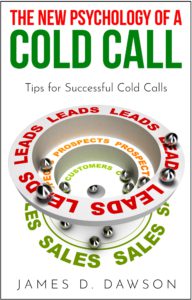Stop Copy-Pasting Generic Intros. These 3 Messages Get Replies and Meetings.
Let’s face it—most LinkedIn DMs are digital junk mail. They show up looking like copy-pasted scripts, full of buzzwords and no real substance. Recipients can spot them from a mile away, and before you know it, delete—another one bites the dust. If you’re a freight broker agent, an independent freight agent, or anyone actively seeking freight agent opportunities, getting ignored isn’t just disappointing—it’s expensive. It means lost time, lost connections, and potentially lost loads.
You can’t afford to blend into the noise.
The good news? You don’t have to. The real key to standing out in a crowded inbox is sending messages that sound like a person, not a pitch deck. That means leading with relevance, not your rate sheet. It means showing interest in their role or challenges before ever mentioning your services.
This is where value-first messaging becomes your secret weapon.
When your messages offer helpful insights, reference something specific, or ask thoughtful questions, they feel natural. Personal. Respectful. And most importantly—they spark conversation. Because in a world where everyone is shouting, the quiet voice that actually listens is the one that gets heard.
So if you’re serious about building a network that opens doors, ditch the pitch. Show up with something useful, human, and honest—and watch those cold DMs turn into warm leads.
This guide will walk you through three proven messaging strategies that skip the pitch and spark genuine conversations—turning cold connections into warm leads.
💬 Message #1: The Compliment + Curiosity Combo
Hook: “People respond to people who pay attention.”
Message Template:
“Hi [Name], I saw your post about [insert recent topic]. Thought your point about [specific insight] was spot on. Out of curiosity, how do you handle [related logistics or shipping pain point]? Always looking to learn from folks in the field.”
Why It Works:
You’re showing interest without selling. This feels more like a peer conversation than a sales approach.
🛠 Use it if you’re a freight broker agent trying to build credibility and relationships in a new industry niche.
👀 Message #2: The “No Pitch” Connect Request
Hook: “You can’t sell to someone who hasn’t accepted your invite.”
Message Template:
“Hi [Name], I work with manufacturers in [region] to simplify their freight operations. No pitch—I just enjoy connecting with logistics folks who know the grind.”
Why It Works:
This sets the tone that you’re not here to spam. It’s respectful, relatable, and low pressure.
💡 Works great for freight brokers looking for agents or independent freight agents trying to expand their network.
📊 Message #3: The Share + Ask Strategy
Hook: “Lead with insight, not intention.”
Message Template:
“Hey [Name], a quick heads up—spot rates on East Coast lanes spiked 12% last week. If you’re shipping in that region, happy to send a breakdown of what we’re seeing. Curious if it’s impacted your loads at all?”
Why It Works:
You’re not asking for a meeting—you’re offering value. That shifts the dynamic instantly.
🚛 Ideal for truck freight brokers trying to build trust with potential shippers or decision-makers in logistics roles.
🚦 Final Tip: Slow Down to Speed Up
It’s tempting, especially when you’re chasing leads, to copy-paste a generic pitch and fire it off to everyone with “logistics,” “shipping manager,” or “supply chain director” in their title. But here’s the harsh truth: LinkedIn isn’t a numbers game—it’s a value game.
Flooding inboxes with the same templated message is a fast way to burn through potential contacts—and worse, it damages your credibility. Shippers and logistics professionals see hundreds of these every week. Most are deleted before they’re even read.
Instead, take the extra 30 seconds to scan their profile, glance at their recent posts, or review their company’s current supply chain initiatives. Did they just announce a warehouse expansion? Mention it. Are they in an industry where fuel surcharges are biting hard? Bring that up. Personalization isn’t just polite—it’s powerful. It tells the reader: “I didn’t just find your title. I found you.”
And when you start the conversation, don’t lead with a quote request or pitch. That’s like asking someone to marry you on the first date. Instead, open with a question that shows you understand their world. Offer a quick tip, a recent trend you’ve noticed, or even a compliment on something they shared. Show them you’re not just another freight broker—you’re someone who gets it.
Because here’s the magic: conversations lead to conversions. The freight agent who starts with empathy and insight is the one who gets the meeting, builds the trust, and wins the load. So slow down, be thoughtful, and make every message count.
Drop a comment below—Let’s see what ideas you have for starting a conversation.
#FreightBrokerAgent #FreightAgentOpportunities #IndependentFreightAgent #TruckFreightBroker #FreightAgentJobs #FreightBrokersLookingAgents #LinkedInSales #ColdMessagingThatWorks
Want some more examples?
💬 1. The Compliment + Curiosity Combo
Example A:
“Hi Morgan, I read your post about carrier delays last week—really appreciated your take on communication gaps. How are you currently managing time-sensitive loads in tight markets?”
Example B:
“Hey Dan, your comment on fuel cost negotiations in the freight group was 🔥. Do you find clients more open to flat rate options lately?”
Why It Works:
It shows you’re paying attention and positions you as someone thoughtful—not just someone pitching.
👀 2. The “No Pitch” Connect Request
Example A:
“Hi Claire, I help regional food distributors optimize freight—but no pressure here. Just wanted to connect with another logistics pro in the Midwest.”
Example B:
“Hey Alex, I saw you’re in the retail freight space. I work with similar clients but won’t drop a pitch. Always good to expand the network with folks who know the grind.”
Why It Works:
It builds connection through humility, not hype.
📊 3. The Share + Ask Strategy
Example A:
“Hey Mark, thought you’d find this interesting—spot rates on West Coast lanes dropped 6% last week. We’re tracking this closely. Curious if you’ve adjusted lanes because of it?”
Example B:
“Hi Jamie, just came across a DAT update showing a sharp rise in flatbed volume in the Southeast. We’ve seen it affect pricing. Want me to send you the details?”
Why It Works:
You lead with insight that helps them—and that makes you worth talking to.


Recent Comments